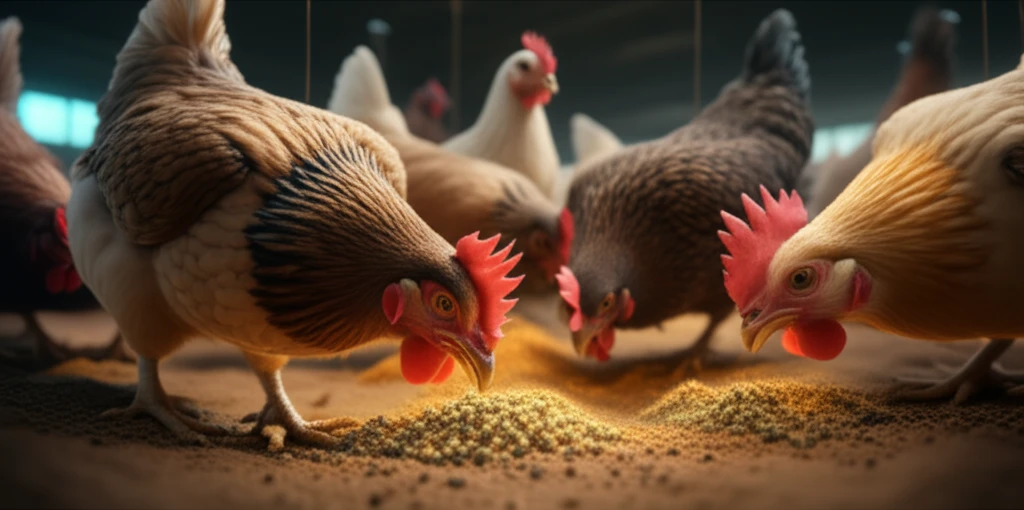
Boost Your Health with Zinc-Enriched Chicken? The Surprising Benefits of Palygorskite
"Discover how innovative chicken feed using zinc-bearing palygorskite clay can enhance meat quality and reduce heavy metal content, offering a safer and healthier protein source for you and your family."
In today's health-conscious world, we're constantly seeking ways to optimize our diets and ensure the food we consume is not only nutritious but also safe. Zinc, an essential trace mineral, plays a crucial role in various bodily functions, from metabolism to immune response. While many foods contain zinc, deficiencies are common, leading to the supplementation of animal feeds to boost zinc levels in the meat we eat.
Now, imagine chickens raised on a diet enhanced with zinc-bearing palygorskite (ZnPal), a natural clay known for its unique properties. Recent research explores this innovative approach, investigating how ZnPal supplementation affects carcass traits, muscle composition, and, importantly, the levels of heavy metals like lead and chromium in broiler chickens. This could mean tastier, more nutritious, and safer chicken on your dinner table.
This article will dive into the fascinating findings of this study, breaking down the science behind ZnPal and explaining how it could revolutionize poultry farming. We'll explore the potential benefits for both consumers and producers, offering a clear and accessible understanding of this cutting-edge research.
The Science Behind Zinc-Bearing Palygorskite: A Natural Health Booster?

Palygorskite (Pal) is a naturally occurring magnesium aluminum silicate clay with a distinctive structure featuring micropores and channels. These characteristics give it excellent adsorption properties, making it useful in various applications, including animal nutrition. By incorporating zinc into palygorskite (creating ZnPal), researchers aim to deliver a more bioavailable form of zinc to chickens.
- Improved Carcass Traits: Supplementation with ZnPal led to increased eviscerated yield and improved muscle yield in both the breast and thigh.
- Enhanced Fat Content: The addition of ZnPal increased fat content in the thigh muscle, contributing to flavor and texture.
- Reduced Heavy Metals: ZnPal supplementation significantly reduced the levels of lead (Pb) and chromium (Cr) in the thigh muscle, potentially making the chicken meat safer for consumption.
What Does This Mean for Your Dinner Plate?
The research indicates that chickens raised with ZnPal-supplemented diets could offer several advantages: improved meat quality, enhanced flavor due to increased fat content, and reduced exposure to heavy metals like lead and chromium. For consumers, this translates to a potentially healthier and safer source of protein.
For poultry farmers, ZnPal supplementation could be a way to improve carcass yields and meat composition, potentially increasing profitability. Moreover, reducing heavy metal accumulation in chicken meat could enhance consumer confidence and market value.
While further research is always valuable, these initial findings suggest that zinc-bearing palygorskite holds promise as a natural and effective way to enhance the quality and safety of chicken meat. As consumers become increasingly aware of the importance of nutrition and food safety, innovations like ZnPal supplementation could play a significant role in shaping the future of poultry farming.
